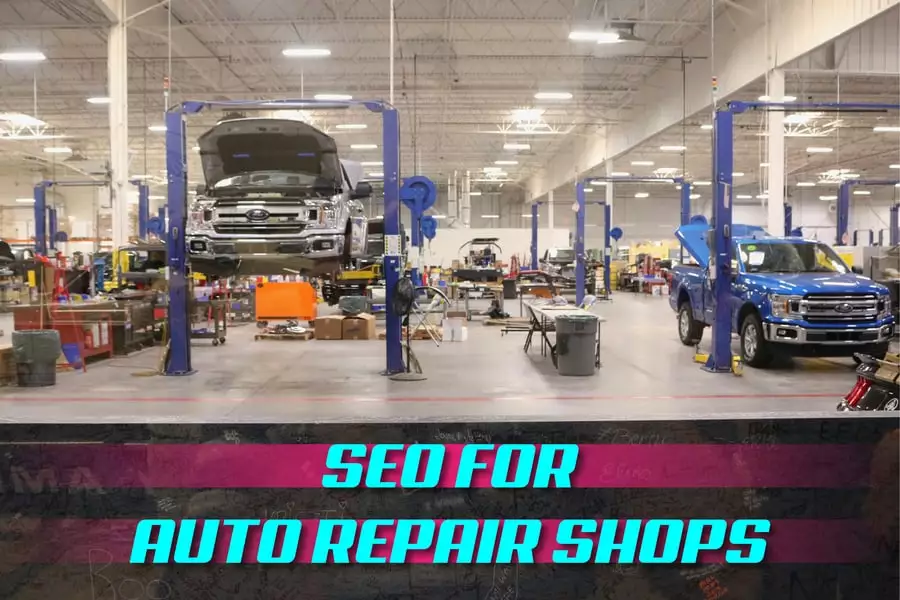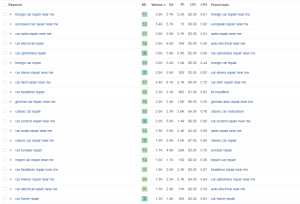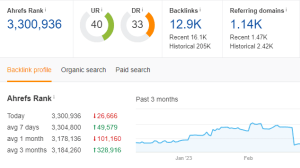
Is SEO for auto repair shops needed? I would have been asking this question if I owned an auto repair shop. But then, I know it is.
The BitChip Digital SEO team has helped several businesses, and we know what needs to be done to set your auto repair business apart online.
When you optimize your website, especially for local search, potential clients around you will easily locate you. How? You’ll appear in their search engine result pages, increasing your chance of getting more online and foot traffic.
What is local SEO for an auto repair shop, and how’s it done? We’ll respond to these and other related questions in this post. So, sit tight and keep reading!
What is local SEO for Auto Repair Shops?
“local” means the area around or some distance from you. SEO (search engine optimization) are technique deployed to increase online traffic, ranking, and credibility.
So, what’s local SEO? It involves optimizing a website, so it appears on local search. If someone in Houston enters the keyword “car body repair in Houston,” the person expects to find an auto repair shop in Houston, Texas.
It shows the potential client in question resides in Houston, Texas. So, if you have an auto repair shop in Houston and targeted the keyword “car body repair in Houston,” you may likely appear on the user’s search engine result page.
The job isn’t done yet, as most users may choose the first two or three auto repairers at page one, two, or three of the search engine result page.
Now, understand something here: the search term “car body repair in Houston” is a long-tail keyword. You can also see that it’s regional: Houston.
Any user that is using such a search term might be ready to splash the cash on their car body work. So, if you’re using best SEO practice, you’ll get online and foot traffic.
Why SEO For Your Auto Repair Shop Is Important
As an auto repair professional, you’re rendering services, and may not actually be selling a product. You can decide to sell one or two products, but your main job is rendering car repair services.
So how can you think of search engine optimization if you’re not selling a specific product? The quick answer is, the focus of search engine optimization isn’t only to help increase your visibility. In addition to that, SEO brings online and foot traffic.
Paid search is another way auto mechanics can achieve success online. Unfortunately, most auto repair shop owners cannot sustain paid ads for long. They can’t compete with larger companies that set aside huge budgets for Google ads.
Now, this is why SEO is important. SEO offers new, small, big and established businesses an equal opportunity to rank online and increase organic traffic. It doesn’t favor any particular brand because of status or financial capacity.
If you are running a new auto repair business, you can grow and reach your goal faster with SEO. Here are strategies that can take you to the top.
1: Treat your website as a shop:
Did you know your website is as important as your physical shop? Yes, it is. Your website is also your sales representative online.
I am not talking about the bot that replies to visitors on your behalf. Instead, I am referring to the entire website. These include its design, text, contact details, videos, images, and any other feature displayed on the site.
Your website should be top-notch. It should be befitting for a professional car repairer and top-rated car repairer that you are. Potential clients should fall in love and be ready to order your services when they land on your website.
Your auto repair business needs a professionally-looking website. It doesn’t have to be flashy but attractive, cool and high-quality.
Here is something to consider when creating a website for your auto repair business.
- Create a blog section on your website.
- Optimize the website for mobile search
- Get a website with responsive design
- Choose the right plugin for your website
2: Optimize website for mobile search:
The stat on mobile device users is enough reason to inspire any brand to optimize their website for mobile search. Today, approximately 83.37% of the world uses a mobile device, and that’s roughly 6.67 billion people.
The organic traffic and global web traffic from mobile search is another stat that should inspire you to optimize your website for mobile search. Statistics show that 63% of all organic traffic comes from mobile phones, while 58.1% of global web traffic comes from mobile phones.
You can deduce the implication of failure to optimize your site for mobile search. You’ll lose tons of potential clients if you don’t optimize your website for mobile search.
3: Keep an eye on your page load time:
Why is page load speed a factor to consider? The simple answer is user experience and search engines’ reaction.
Google and other search engines despise slow websites. Website with slow load speed produces terrible user experience.
How would you feel if you try to load a page and after several seconds, it still doesn’t load? You’ll certainly feel bad.
People don’t have the patience to wait several seconds for a page to load. They would rather visit your competitors and get the information or service they seek, there.
How fast does Google want your website load time to be? Google wants your websites to load under half a second. In other words, it wants websites to load in the blink of an eye.
For Google, users come first. The search engine giant wants users to have the best experience as they surf the web for solutions to their problems.
People are seeking diverse solutions on the internet, a reason they come online and spend time surfing the web. People also want to fix their problems fast and move on with their lives.
So, if you want your auto repair business to grow and achieve your set goal, improve your website load speed. How can you determine if your website is slow? You can use a couple of tools to figure out. Here are some examples of tools to determine to conduct website speed test:
- GTMetrix
- Pingdom
- YSlow
- Dotcom-Monitor
- IcoMoon
- Yellow Lab Tools
- Google Light House
- Google Speed Scorecard
- Google Cache checker
- URL compression test
- Google PageSpeed Insight
You can see there are a lot of tools here. And some of these page speed test tools are free, while some are paid tools.
The free tools can give you some useful information about your page load speed. However, the information you’ll get won’t be as in-depth as paid tools.
At BitChip Digital, we use a combination of tools to test our clients’ websites load speed.
Using different page speed test tools enables us to identify if a website is slow, find areas of improvement and fix them.
A Handy Tip: Google mobile-first indexing is something you shouldn’t toy with. If your website is slow or isn’t mobile-friendly, you’ll lose plenty of customers, plus your revenue and search ranking could reduce drastically.
Keep an eye on your website’s speed. You can use any of the tools mentioned on this page to monitor it.
How fast should a website be? Your website can load under a second, as Google wants. But everyone knows that this isn’t always visible.
Your auto repair business website will contain images, plugins and other things that can impact load speed. Thus, you might not achieve Google’s under half a second load time.
Study has shown that website load time of 1 – 4 seconds is quite enough for your business to succeed.
Make your site load faster, and you’ll see your UX improve.
Here are some stats about website page loading speed.
- According to portent, the first five seconds of a web page’s load time boasts the highest impact on conversion rate.
- A website’s conversion rate reduces by 4.42% each time there’s an additional second to the page load time. (Portent).
- Approximately 75% of consumers have agreed that page load speed impacts their readiness to order from an online retailer. (Unbounce).
- Of all the individuals surveyed, half claims they would sacrifice video and animation for page load speed. (Unbounce)
- According to Google, compressing texts and images will enable 25% of websites to save around 250 bytes and others up to 1 MB.
4: Go pro on keyword research:
Keyword is important in SEO. The keyword used will help Google crawlers understand your content and know where to rank you.
You must take keyword research seriously. Understand that your choice of keyword will determine how your content will perform online.
If you target the right keyword, you will rank for it. When we say “rank,” we mean appear on the first page of SERPs.
What advice do we give on keyword? It is simple. You should target long-tail keywords. For example, “best car repair in Brooklyn.”
This keyword above focuses on a specific region. The message is clear; the user wants a car repairer that resides in Brooklyn.
If you target this keyword and have an auto repair shop in Brooklyn, you’ll not only receive traffic online. You’ll also get foot traffic.
Long-tail keywords also boast low search volume and competition. These keywords aren’t hard to rank for on search engine.
You need to consider several factors when using keyword. Check them out below:
- Consider keyword relevance: Is the keyword you’re targeting relevant to the subject matter? You can’t be talking about “how to repair a car” and your keyword is about “how to buy shares in XYZ Company.”
- Keyword search volume: Check the search volume before using any keyword. Are people using the search term? Is the number of people using the search term encouraging? If no one is using the keyword, it won’t make sense to optimize for it.
- Keyword competition: Who is outranking you for your choice of keyword? Do you think you have a chance to outrank them in the future? It’s important to consider a keyword’s competition before optimizing for it too. If the keyword has massive competition and you find that websites you look up to are optimizing for it, then target other keywords.
- Keyword ROI: When you invest by optimizing for a keyword, you expect to get returns. The returns include traffic, ranking and that your website shows up in search engine result pages. So before using any keyword, ask yourself this question: will I get traffic? Will the traffic convert? Traffic from long-tail keywords are most likely to convert. Long-tail keywords are more focused and traffic are often qualified leads.
- Keyword intent: Finally, remember that you can control the type of users you bring to certain page by the keyword you’re targeting.
5: Make your auto repair content engaging and well-optimized:
Don’t just write content for writing sake. Publishing tons of content because others are doing the same thing doesn’t mean you’ll get the same outcome.
Write valuable content. Your content should be informative, readable, engaging and well-optimized.
Use keyword in your content strategically. Do not follow the old path of search engine optimization, called “keyword stuffing.” That era is long gone!
Now, all Google want you to do is place your keyword strategically in your content. In other words, place your keyword on the body of your content, Alt text, Meta title, and Meta description.
Pro Tip: Create a blog section in your website to regularly post your content.
Here are topic ideas for your auto repair business:
- Car maintenance tips for summer
- Car maintenance and service checklist
- You can save this much money with regular car maintenance.
- Easy tips for headlight replacement
- How to remove a bumper dent
- How to fix a flat tire in under 20 minutes.
Tips to draft high-quality content:
Adhere to these tips when drafting your content to produce a high-quality content that will set your auto repair business apart.
- Research before writing. You are an auto repair expert and no one will take that away from you. However, you need to conduct some research before writing. Check for topic ideas and check to see what others are doing. Learn how your competitors structured their content to know the ideal way to structure yours.
- Place your keyword in the content strategically. You also need to use relevant keywords too.
- Write 100% unique content.
- Avoid fluffs. You don’t need them in your content. Google doesn’t rank a web page because of the word count. Instead, it considers the value the content offers. 5000 words content can be outranked by another shorter content. We’re not saying long content is bad. What we’re saying is, whether long or short, make your content valuable.
- Write content that solves users’ problems: Is your content fixing a problem? How well do you think it solved the proposed problem on a scale of 1 to 10?
- Edit your content profusely. Don’t leave traces of mistakes behind.
- Finally, decide how often you want to publish.
A Handy Tip: Content doesn’t have to be text alone. It can be infographics, videos, or images. You have to figure out the content your audience likes and use it.
6: Link building for auto repair shop is a wise decision:
Do you know the benefits creating a healthy backlink profile can offer your auto repair website? The impact can be massive SEO-wise.
We have heard many times from Google ex employees that backlinks are still very relevant. In fact, they are among the most relevant Google ranking factors.
What does backlink entails? It involves reaching out to niche relevant sites to have your link placed on their site (on a specific content).
In most cases, you’ll be asked to provide a valuable content and insert your link to the content. In this case, all the website owners need to do is publish your content.
The website owner has the power to make the backlink do-follow or no-follow. A do-follow link is one where link juice is passed to your page, while a no-follow is the reverse. Link juice isn’t passed to your page in a no-follow. But you’ll receive organic traffic from such a link.
A Handy Tip: Getting only do-follow links will create suspicion. The best thing is to have a mixture of both links.
There are dos and don’ts when creating a backlink profile. Here are the things to consider.
- Ensure your links are from niche-relevant websites. Google values niche-specific links. That is, the websites you’re getting your links from are similar to yours. Not in terms of the website design, but niche.
- Avoid spammy websites. Links gotten from spammy websites is a waste of time. Google may not actually penalize you, as they used to years back. However, you won’t get any benefits for those kinds of backlinks.
- Produce high-quality, information-packed and valuable content. Just don’t write for writing sake. Avoid fluffs in your content and give readers a reason to conclude that you’re truly a pro in your field.
- Don’t create sites specifically to get backlinks. Get your links from genuine websites, so that Google will rate them as authoritative, natural, and non-spammy. Such types of links impact your website’s SEO performance more.
- Avoid sites with zero traffic. You have no business with such sites.
7: Embrace Google My Business listing:
Google My Business or GMB is one business directory you should never miss. A couple of other business directories exist out there too. However, we encourage you to list your business only on credible directories.
The benefit of getting your business listed on GMB is huge. Not only will you be making it easier for potential clients to find you, but receive a chance to social-proof your auto repair business.
There is a provision for people to review your business on Google My Business, and these are evaluations that can convince others to make a decision about your business.
People can decide you’re the right one for their auto repair job because of one or two reviews on your Google My Business page.
On your Google My Business page, don’t forget to list your contact address, business name and other relevant information that will help prospects learn more about your business.
Again, don’t be shy to ask for reviews from your existing clients. If you did a good work, your client won’t have problems leaving a honest review on your GMB page.
Conclusion
You can learn SEO for auto repair shops on this page. We have explained things you need to do to make your website visible online.
The process might look simple on paper. However, SEO is more complex and dynamic than it looks. You have to perform keyword research and choose the best keyword to optimize for.
But the question is, can an auto repair professionals handle their own SEO? If you can do it, you should go for it.
However, getting help from a SEO expert might be the best option. Your website SEO will be attended to professionally and you’ll see the result in no time.
You can contact BitChip Digital, a global digital marketing company, to help with your website optimization. We will take your auto repair business to the next level.




